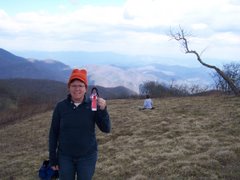Rose Raymond
Library Tech
Granite St. School
Millinocket, ME
2015 TTEC Cohort
 |
| Atlantic salmon stages of development |
On the day of the field trip to the East Branch of
the Penobscot River students are shown how to siphon the salmon up with tubing
from the aquarium into a bucket. We note
the importance of matching the river temperature with the temperature of the
bucket water and assign a student to this task when we get to the river. This is a great time to do a pocket activity
with the rest of the students.
 Students always ask once they’re released, what’s
going to happen to them? The fry will
remain in the area where the students release them for a couple of years, where
they will feed on black fly, mosquito, stonefly and the caddisfly. As the salmon parr continue to grow through
their second winter they undergo the biological changes of smoltification, a
process that takes place in certain gill cells and kidneys of the fish,
allowing it to live in either fresh or salt water. These two year old salmon, now called
“smolts”, imprint on the particular chemical “fingerprint” of their home
stream. They actually learn the unique
smell of their home river which allows them to recognize and return to it two
years later when they return. The
survivors of the salmon students stocked in 2016 will instinctively migrate
downstream to the ocean in 2018. They’ll
enter the sea, and migrate northeastward to Greenland, where there’s lots of
food. They’ll eat shrimp which gives them
their salmon flesh color. At four or five
years old, 2018, they’ll once again begin a migration back to their home stream
in Maine where they stocked them. Unlike Pacific salmon, which all die after
spawning, Atlantic salmon returns to spawn several times if they get really
lucky in avoiding predators.
Students always ask once they’re released, what’s
going to happen to them? The fry will
remain in the area where the students release them for a couple of years, where
they will feed on black fly, mosquito, stonefly and the caddisfly. As the salmon parr continue to grow through
their second winter they undergo the biological changes of smoltification, a
process that takes place in certain gill cells and kidneys of the fish,
allowing it to live in either fresh or salt water. These two year old salmon, now called
“smolts”, imprint on the particular chemical “fingerprint” of their home
stream. They actually learn the unique
smell of their home river which allows them to recognize and return to it two
years later when they return. The
survivors of the salmon students stocked in 2016 will instinctively migrate
downstream to the ocean in 2018. They’ll
enter the sea, and migrate northeastward to Greenland, where there’s lots of
food. They’ll eat shrimp which gives them
their salmon flesh color. At four or five
years old, 2018, they’ll once again begin a migration back to their home stream
in Maine where they stocked them. Unlike Pacific salmon, which all die after
spawning, Atlantic salmon returns to spawn several times if they get really
lucky in avoiding predators.
What grade will you be in 2019, when the salmon
come back? A fun topic of discussion for
students to realize the length of this life cycle!
This program goes beyond classroom borders to
involve the local community in resource management. It gets students into the outdoor classroom
and teaches them stewardship in protecting natural resources.
WARNING. . . Insect repellent is toxic to the fry. To be
safe, no one on the field trip can bring or use insect repellent!
Once the container and stream temperature are
matched, students will transfer the fry into the river giving the number of fry
to the student in charge of the count.
The data is totaled for a completion of the permit.




No comments:
Post a Comment